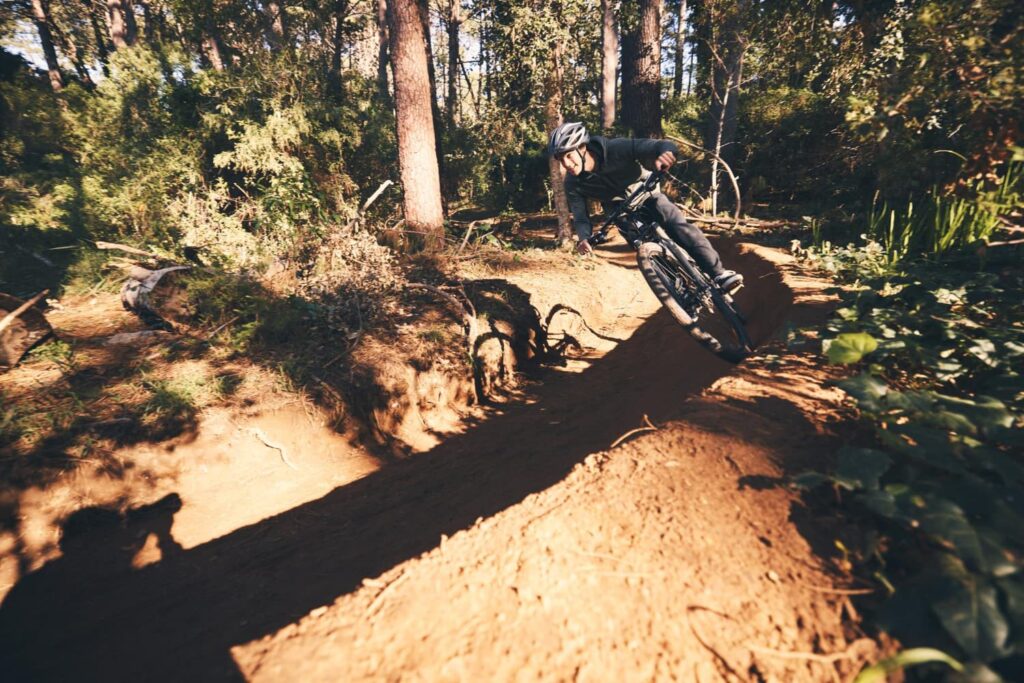Understanding Switchbacks
Switchbacks are those zigzagging sections of trail that help you ascend steep terrains. While they can seem daunting initially, mastering them can make your hiking or biking experience a lot more enjoyable. They’re designed to reduce the gradient of a climb, making it easier (and safer) to navigate uphill. A well-executed switchback can be the difference between a smooth climb and a grueling slog.
Body Positioning and Balance
Finding Your Center of Gravity
Your body positioning is crucial when navigating switchbacks, especially when the slopes get steep. Keeping your center of gravity low adds stability, which can save you from stumbling, slipping, or worse. Bend your knees slightly and lean slightly forward to maintain your balance.
Using Your Core
Engaging your core is essential. It helps maintain balance and allows you to move efficiently. A strong core keeps you stable and reduces fatigue over long climbs. It may not be the most glamorous part of hiking, but trust me, your body will thank you later.
Techniques for Navigating Switchbacks
Approaching the Turn
As you approach a switchback, slow down and assess the turn ahead. The key is to position yourself correctly. If you’re biking, take the outside line of the turn. For hikers, follow the trail closely but don’t be afraid to take a wide stance when necessary. It gives you more control.
Making the Turn
When making the turn, shift your weight in the direction of the turn. If you are biking, lean into it, but don’t forget to look where you want to go. This helps you maintain momentum. Hikers should plant their inside foot firmly before stepping out to follow the trail.
Pacing Yourself
Rushing through switchbacks can lead to missteps and slips. Instead, focus on a steady pace. It is completely normal to feel a bit out of breath. Take your time. Find a rhythm that works for you, whether it’s a slow and steady climb or short bursts of energy followed by mini-rests.
Footwear and Gear Choices
Selecting the Right Shoes
Choosing the correct footwear can make a world of difference. Look for shoes with good traction, support, and durability. Hiking boots or trail running shoes with deep lugs will grip the trail better on those unpredictable switchbacks. I once wore a pair of worn-out sneakers, and let’s just say, that was a one-way ticket to a nice tumble.
Other Gear Considerations
Consider wearing a lightweight backpack that distributes weight evenly. It keeps your body centered as you navigate tricky sections. Also, using trekking poles can help stabilize you and reduce the strain on your legs. They essentially provide extra legs when you need them most.
Mindset and Mental Preparation
Stay Positive
Having the right mindset is just as important as the physical techniques. Approaching switchbacks with positivity can change your entire experience. Instead of thinking about how tough it is, focus on the beautiful views or the sense of accomplishment you’ll feel after conquering them.
Visualization Techniques
Before you begin your hike or ride, take a moment to visualize the switchbacks ahead. Imagine yourself smoothly navigating each turn. This mental practice can enhance your confidence and reduce anxiety when you actually encounter those tricky spots.
Common Mistakes to Avoid
Rushing the Process
Many people find themselves rushing through switchbacks, eager to get to the top. This approach often leads to slips and falls. Take your time and enjoy the journey; after all, it’s not just about reaching the summit.
Ignoring Trail Etiquette
Whether you are hiking or biking, it is crucial to respect other trail users. If you are approaching someone uphill, yield to them. It is simply good manners and can prevent accidents.
Overexerting Yourself
Don’t feel pressure to keep pace with faster hikers or bikers. Know your limits and listen to your body. If you need a break, take one. There is no shame in stopping to enjoy the view or catch your breath.
Boosting Your Technique Through Practice
Frequent Hikes or Rides
The best way to become comfortable with switchbacks is through practice. Try to incorporate switchback-heavy trails into your routine. Over time, you’ll build confidence and refine your technique. Plus, the more you do it, the less intimidating it becomes.
Learn from Others
Hiking or biking with more experienced friends can help you learn different techniques. Observe how they tackle switchbacks and incorporate some of their strategies into your own style. Don’t hesitate to ask questions; most seasoned hikers and bikers are more than happy to share their tips.
Advanced Techniques for Experts
Bike-Specific Techniques
If you are on a bike and looking to take your skills to the next level, consider the following:
- Manualing: This technique involves pulling up the front wheel to lift it over obstacles. It can help maintain speed and control.
- Countersteering: When making a hard turn, push the handlebars in the opposite direction momentarily to initiate the lean.
Hiker-Specific Techniques
As a hiker, once you are comfortable on the switchbacks, consider trying some advanced foot placements like:
- Side Stepping: When the switchback is particularly steep, sidestepping can help maintain a lower center of gravity.
- Using Off-Camber Trail Moves: Embrace the slope by utilizing your peripheral vision and balancing your body weight effectively.
Safety Considerations
Know Your Limits
One of the most important aspects of navigating steep switchbacks is understanding your capability. If a trail feels too challenging, it is okay to turn back or take a more beginner-friendly route. It is about enjoying the journey, not testing your limits unnecessarily.
Weather Awareness
On steep trails, changing weather conditions can impact safety significantly. Pay attention to the weather forecast before you head out. Wet or icy conditions can turn a simple switchback into a treacherous slip-and-slide. Always carry appropriate gear like a lightweight rain jacket or an extra layer for colder temperatures.
Conclusion
Mastering switchbacks on steep mountain trails involves a blend of technique, equipment, and mindset. By focusing on your body positioning, employing the right techniques, choosing appropriate gear, and practicing regularly, you can conquer these challenging parts of your outdoor adventures.
Remember, switchbacks are not just obstacles; they are opportunities to experience the beauty of nature, challenge yourself, and enjoy a seriously satisfying climb. So gear up, hit those trails, and embrace the thrill of those winding paths!






